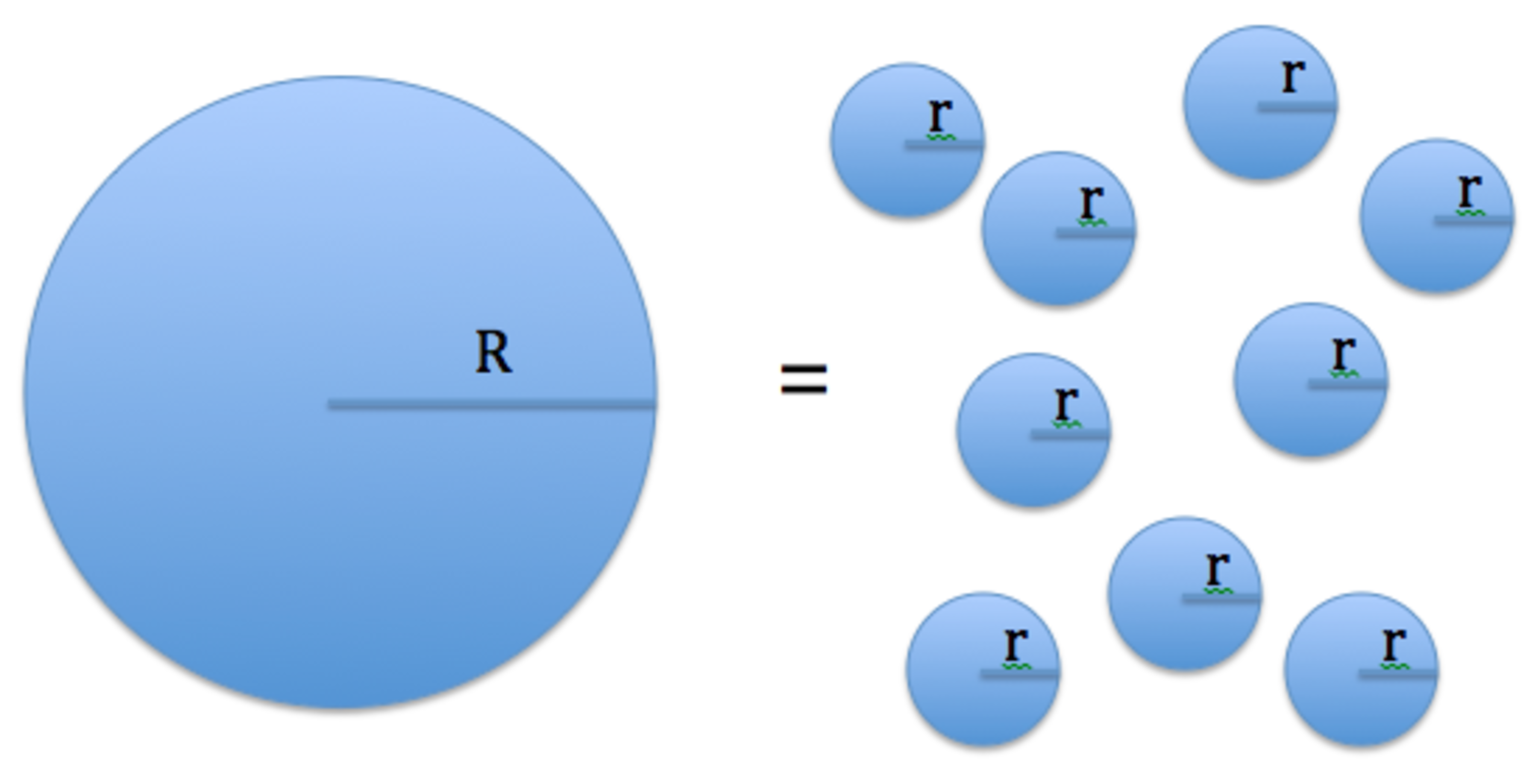Big circle, little circles
, and are nonzero positive integers, and > 1.
is the radius of circles whose areas together are equal to the area of a single circle with radius .
For example, if , could be 1, and there would be circles. could also be 2, and there would be circles. However, could not be 3, since there is no way to divide the big circle evenly into little circles with that radius.
How many different possible values of the small radius
exist for a large radius of
?

The answer is 74.
This section requires Javascript.
You are seeing this because something didn't load right. We suggest you, (a) try
refreshing the page, (b) enabling javascript if it is disabled on your browser and,
finally, (c)
loading the
non-javascript version of this page
. We're sorry about the hassle.
The statement that N circles of radius r are together equal in area to the one circle of radius R is equivalent to this mathematical statement:
π R 2 = N π r 2
We can solve that for N:
r 2 R 2 = N
Since we are requiring that N be an integer, the prime factorization of r must be a subset of the prime factorization of R , excluding the whole set, since N > 1 .
This problem is now reduced to finding how many unique subsets there are of the prime factorization of R . If R has P different prime factors, and the kth unique prime factor is repeated n k times, then the number of unique subsets of the prime factorization is
( k = 1 ∏ P ( n k + 1 ) ) − 1
The " + 1 " is there because for any given subset, we may choose zero of a particular prime factor, and the " − 1 " is there because we want to exclude the case where the subset is the whole set.
In this case, R = 9 0 0 0 0 = 2 ⋅ 2 ⋅ 2 ⋅ 2 ⋅ 3 ⋅ 3 ⋅ 5 ⋅ 5 ⋅ 5 ⋅ 5
There are three prime factors, 2, 3, and 5, repeated 4, 2, and 4 times respectively. Thus the number of permissible r is:
( k = 1 ∏ 3 ( n k + 1 ) ) − 1 = ( ( 4 + 1 ) ⋅ ( 2 + 1 ) ⋅ ( 4 + 1 ) ) − 1 = 7 4
Thus, the number of different r for R = 9 0 0 0 0 is 74.